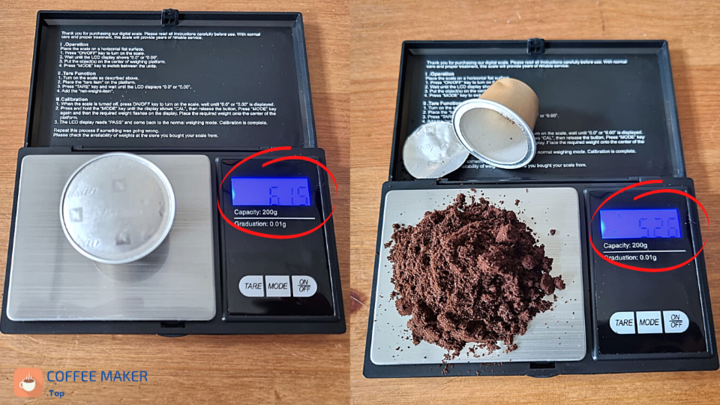The use of coffee pod machines for coffee making has become popular due to their convenience and speed of preparation. Despite this, the traditional espresso system is still the best method to obtain a more authentic and artisanal cup of coffee.
The coffee obtained with a coffee pod machine differs from that obtained with an espresso machine due to how the coffee is extracted. However, they are similar in appearance in terms of the hazelnut-coloured crema, the amount of beverage dispensed, the dark body and the intense aroma that comes from both.
Each system has its advantages and disadvantages, so it is important to understand these differences to decide which coffee brewing system is right for you.
Factors that have contributed to the success of coffee pod machines
The success of coffee pod machines is due to several factors:
- Convenience and ease of use: coffee pods offer a quick and easy way to brew a fresh cup of coffee. No measuring or grinding of coffee beans is required, which makes it very convenient for people who are short on time or looking for an easy way to prepare coffee.
- Variety of flavours: Coffee pods come in a wide range of flavours, from latte to decaffeinated coffee and wide more varieties. This means we have a lot of choices and can choose the flavour we like best at any time.
- Conservation and durability: Hermetically sealed coffee pods keep coffee fresh for a long time, which means we can enjoy a quality cup without worrying about the beans’ freshness.
- Branding and marketing: Major coffee brands have invested in advertising and marketing their coffee pod products, which has helped create a positive image in our minds. They have also created a sense of exclusivity and quality by selling limited edition pods and special collections.
- User experience: User experience is another key factor in the success of capsule coffee. Coffee pod manufacturers have designed pod systems that are easy to use. In addition, coffee pod machines are visually appealing, which adds aesthetic value to the space where the machine is placed.
Differences between coffee pod machines and espresso machines
1. Amount of ground coffee used
While 7 to 8 grams of ground coffee are used to prepare a cup of espresso, capsules contain different amounts, depending on the brand and type of coffee. They can contain from 5 to 11 grams.



The amount of beverage dispensed in millimetres will be the same in both an espresso machine and a coffee pod machine. Coffee pod machines use more or less coffee depending on other factors discussed later.
➡️ Even though coffee pods contain more or fewer grams of what is understood as “correct” in espresso machines, they create a thick and compact crema, even better than that of the espresso machine.
2. Extraction time
The main difference in the length of the extraction process between traditional espresso and coffee pods is when the water is in contact with the ground coffee.
Because the extraction time is shorter in coffee capsules, the amount of soluble compounds extracted is less, resulting in a cup with less aroma, bitterness and caffeine than a traditional espresso.
A traditional espresso filters water through ground coffee for between 25 and 30 seconds. The extraction process for coffee pods is shorter, lasting between 15 and 20 seconds for a standard portion of coffee.
➡️ However, using higher pressure and finer grind in the pod extraction process can compensate to some extent for these differences, increasing the aromatic intensity and bitterness of the coffee in the cup.
3. Machine temperature
Water temperature has a major effect on coffee extraction. The hotter the water, the faster the aromas will be extracted.
Maintaining a temperature as close to 92°C during extraction will ensure a quality cup of espresso. Above 95°C, the coffee may burn, while below 90°C, it will be under-extracted.
The water temperature in an espresso machine is usually more constant and closer to 92°C, which is not the case in a capsule machine.
➡️ Coffee pod machines are designed to heat the water to between 85°C and 95°C, and although the water reaches the ideal temperature of 92°C, when the temperature drops during brewing, the thermostat does not react fast enough and the temperature can drop to 85°C.
Coffee that is attempted to be brewed with water temperatures below 90°C will be under-extracted; it will usually be a more watery and less full-bodied coffee, as not all the oils will have been extracted from the coffee.
4. Pressure bars
Everyone knows that the perfect espresso is made at 9 bars of pressure, so why do coffee pod machines use up to 19 bars of pressure?
➡️ The coffee pod machine attempts to replicate the extraction of coffee from an espresso machine. But as the coffee must be confined in a small capsule size, if only 9 bar is applied, a minimally intense and rich flavour will not be achieved.
So, because of how pod machines are constructed, more than twice the pressure is required to achieve a quality espresso, albeit far from that produced by traditional espresso machines.
Conclusion
The invention of the pod machine is undoubtedly a breakthrough that has conquered our homes with its ability to produce exquisite results. However, comparing it to a real espresso machine would be unfair due to the differences in its features.
The system of a coffee pod machine is impressive, as it manages to recreate an intense and aromatic drink in a small space. This makes it an incredible tool for households looking for quality and convenience in their coffee-making experience.
However, I recommend an espresso machine for a more authentic and artisanal result. If, on the other hand, you are looking for convenience and a good result, a coffee pod machine is the idea for you.
